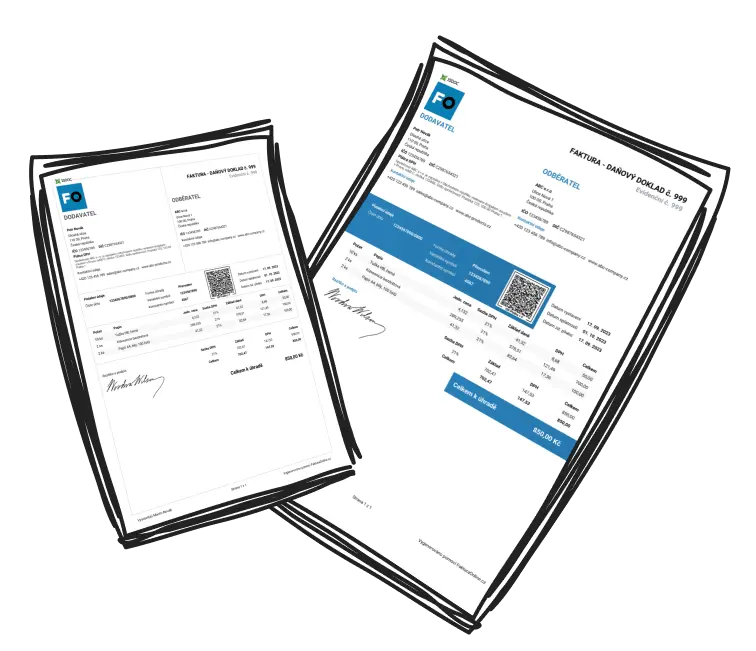An itemised invoice is a thorough document laying out the goods or services a seller has delivered to a buyer, complete with their respective costs. It enhances transparency, ensuring all parties grasp the charges fully, often supported with concise examples.
Take, for instance, a freelance graphic designer's invoice, which might include:
Logo creation: £230
Website mockups: £385
Social media assets (3 at £77 each): £231
Subtotal: £846
VAT (20%): £169.20
Total: £1,015.20
Each service appears as a distinct line item, detailing the service, amount, rate, and cumulative cost. This precision reduces confusion and builds trust between seller and client.
How Do You Draft an Efficient Itemised Invoice?
Creating a purposeful itemised invoice hinges on clarity and formality. Here's how you can ensure your invoice is effective for all parties:
Design your format to be neat and straightforward to prevent misunderstandings.
-
Incorporate these vital sections to form a robust itemised invoice:
Header: Your company's name, logo, and contact details.
Client Details: The client's name and address.
Invoice Information: Invoice number, issue date, and payment terms (e.g., "Net 30").
Itemised List: Description, amount, individual price, and total cost for each service.
Totals: Subtotal, taxes, any discounts, and the final amount due.
Notes: Extra instructions or expressions of gratitude, such as "Payments through BACS or international bank transfer are welcome."
Utilise professional templates or invoicing apps for consistency.
Keep your branding intact by including your business’s colours, fonts, or logo.

Tip
Streamline your invoicing with software like QuickBooks or FreshBooks, which guide formatting and perform automatic calculations.
What Are the Steps for Crafting an Itemised Invoice?
Follow these steps to create a proficient itemised invoice:
Label the Document
Clearly state it’s an "Invoice" at the top.Add Your Business and Client Information
Enter your business’s name, logo, address, and contact details. In addition, include the client's details to ensure correct delivery and referencing.Assign an Invoice Number and Dates
Provide a distinctive invoice number, alongside the issue and due dates.-
Construct an Itemised Table
Incorporate a table with headings such as:Description of goods or services.
Amount (if required).
Price per unit or hourly charge.
Entire cost of each line item.
Compute Subtotals and Taxes
Tally the amounts for all goods and services, adding on taxes, discounts, or fees to establish the total payable amount.Specify Payment Options
Clarify the acceptable payment methods (like credit card, PayPal, or bank transfers) and provide necessary account details.Verify and Save as a PDF
Double-check to ensure all data is accurate. Preserve and dispatch the invoice as a PDF to hold its format.
Always include payment terms (for instance, 'Late payments exceeding 30 days will face a 5% surcharge').
Why Are Itemised Invoices Vital for British Businesses?
Itemised invoices are instrumental in managing a professional and financially healthy business. Here’s why:
Client Clarity
An itemised invoice fosters transparency by articulating all charges, wiping out misunderstandings and laying down trust. Clients grasp precisely what they’re being charged for.Streamlined Financial Records
Itemised invoices act as crucial documents for observing revenue, overseeing outgoings, and keeping organised records for tax inquiries and audits.Conflict Resolution Instrument
By itemising goods or services clearly, it becomes simpler to settle disagreements. Each charge is chronicled, furnishing a reliable reference for client discussions.

Tip
Systematically save all invoices for compliance and easy retrieval during tax periods.
Are There Templates Available for Itemised Invoices?
Yes, there are numerous templates that make invoicing a breeze! These templates are pre-formatted with crucial fields for service descriptions, quantities, and costs.
Microsoft Excel: Supplies templates for rapid tax and total calculations.
Microsoft Word: Visually adaptable for businesses keen on integrating brand elements.
QuickBooks or FreshBooks: Professional tools with integrated calculators and polished designs.
Canva: Incredibly customisable templates with a simple drag-and-drop feature.
Employing templates conserves time and guarantees that your invoices sustain a polished appearance. Various tools offer free or subscription-based plans according to your demands.
Constructing an itemised invoice needn't be a trial. With proper tools and layout, you can produce professional, detailed invoices that streamline business operations for both you and your British clients.


